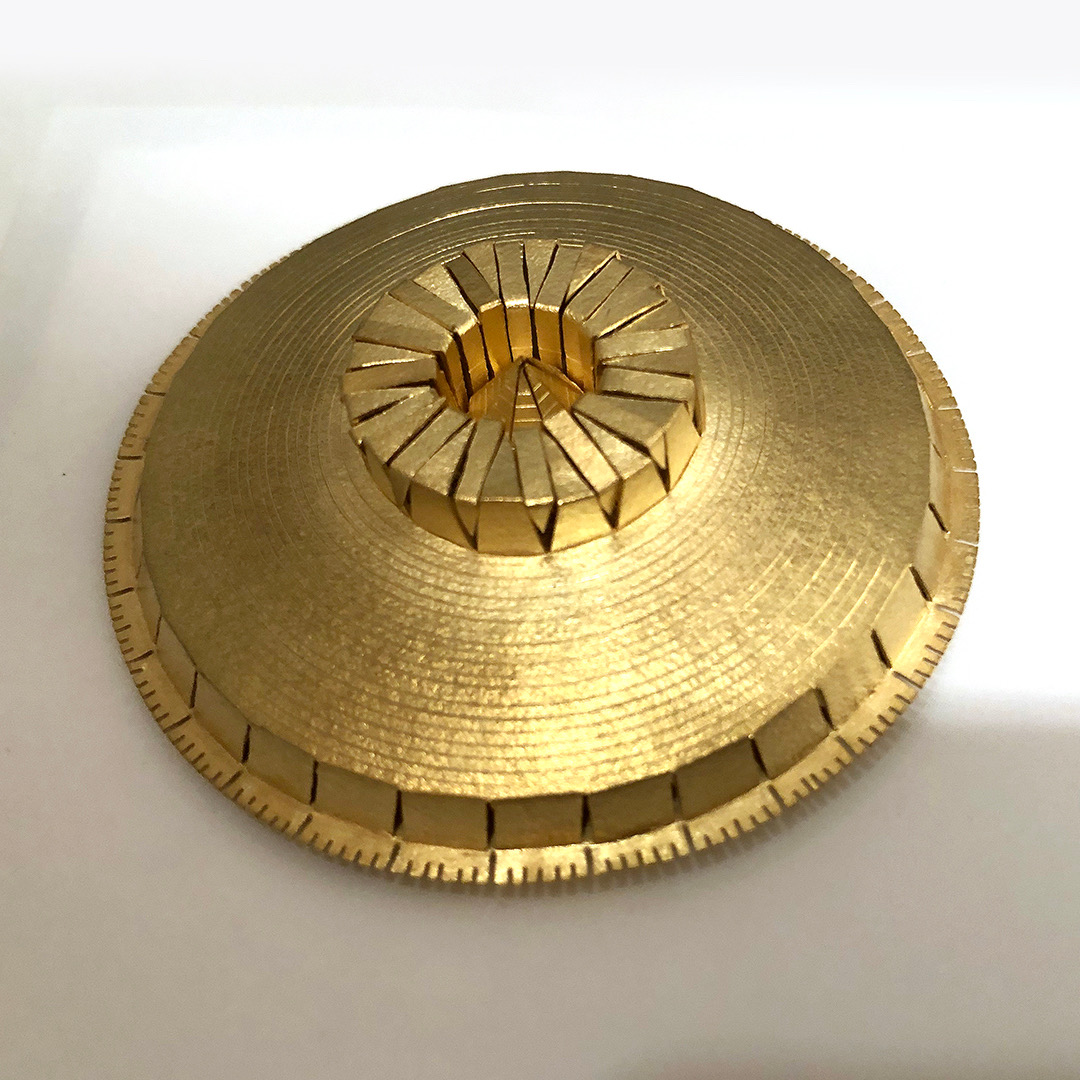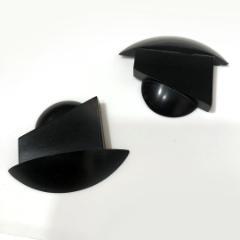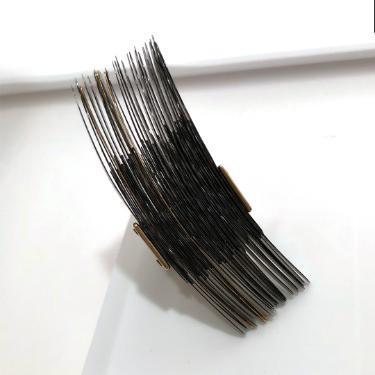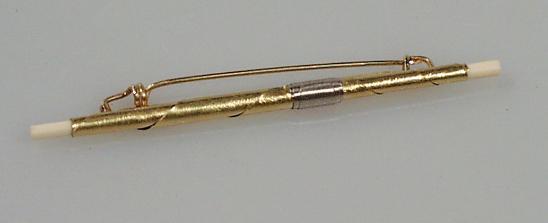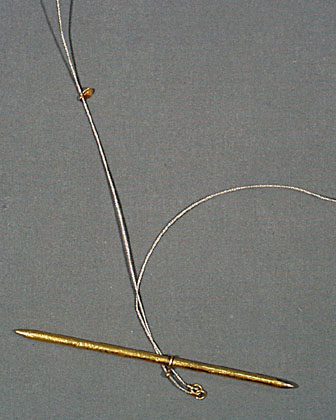Fresh Metals
Lisa Gralnick, Gold Brooch, 2002, gift of the artist in Honor of Kurt Matzdorf, 2005.056
Black and gold can represent a wide spectrum of human drama. In the history of gold, we find light and beginnings: symbols of marriage and birth, indications of wealth, power, and optimism. The gold pieces here are intricate and full of life. Black, on the other hand, is often used to symbolize emptiness, weight, and death. The black resin pieces here conjure mourning jewelry from the Victorian era made from the black gemstone jet to commemorate the dead. There is something elemental in both black and gold; in them we recognize essential aspects of our shared experience.
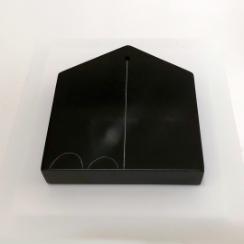
Lisa Gralnick, Brooch, 1989, 1997.014.006 & Pair of Earrings, 1989, gifts of Robert W. Ebendorf, 1998.008.005 a&b
The Black and Gold grouping of contemporary jewelry currently on view features several works by Lisa Gralnick, who graduated from SUNY New Paltz in 1980. Her jewelry designs often incorporate geometric, mechanical, or architectural forms fabricated in black acrylic or gold. Her early work in black acrylic, which alludes to the threat of technology, was inspired by coincidental sightings of a submarine, a black rubber hose, and a broken vinyl record.
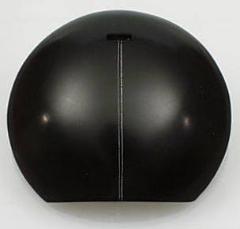
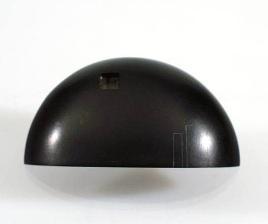
In the 1990s she began to explore the relationship between humanity and technology in a more positive light, which I feel is reflected in her gold pieces from 1999 and 2002 . Through her jewelry, she explores the relationship between the wearer and our industrialized culture.
These two pieces blend black and gold elements into a single form, and they both display dynamic, linear textures. Boris Bally’s brooch uses rigid geometry to capture a piece of precisely fluted black rubber and elevate it with a central cubic zirconia set into gold.
Boris Bally, Brooch, n.d., Silver, gold, rubber, zircon, gift of Robert W. Ebendorf, 1998.008.003
Tone Vigeland’s ring is much more gestural. It is composed of thin pieces of silver, gold, and steel riveted tightly together in the middle. These elements overlap in the center, creating variations in density that work with the subtle curves to create a uniquely compelling form.
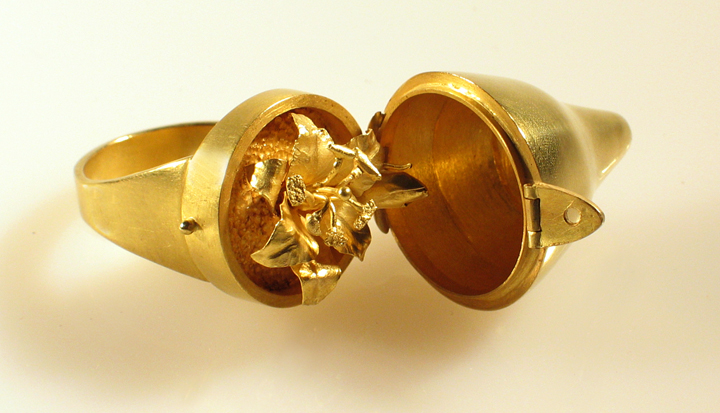
Tone Vigeland, Ring, 1972, silver, gold, steel, gift of Robert W. Ebendorf, 1999.031.001
Boris Bally is a swiss-trained goldsmith, later educated at Carnegie Mellon, with a thriving business and metals studio in Providence, RI. Bally cites medieval metalworking and heraldry as a major influence on his work. His preferred medium is metal, specifically recycled road signs, bottle caps, and other scraps that he reforms into furniture and various vessels. Using these scrapped materials allows Bally to explore themes of the American struggle for wealth and success, and urban life.
Pat Flynn, Stick Pin, 1985, platinum, gold, artificial ivory, gift of Vincent Pidone, 2000.008.001
Norwegian jeweler Tone Vigeland is best known for her silver mesh pieces, made of an accumulation of linked silver parts or pressed steel nails, that allow jewelry to move with the body. Her works often feature oxidation, using chemicals to speed up silver’s natural tendency to darken over time, which is the source of the “black” in this work. She has established an international reputation based on the beauty, wearability, and fine craftsmanship of her work.
